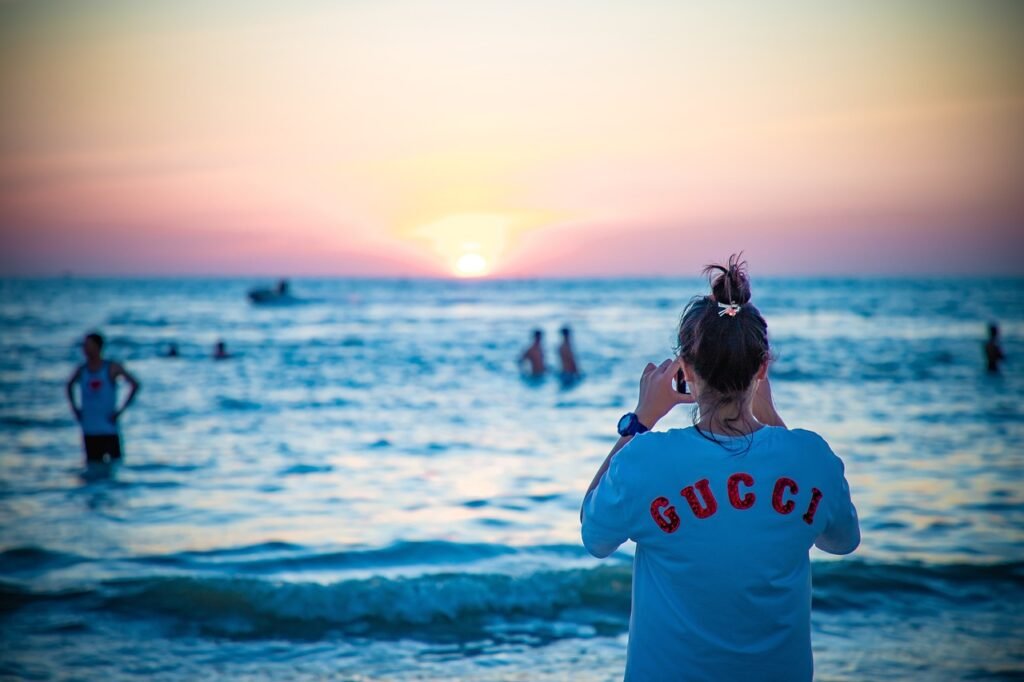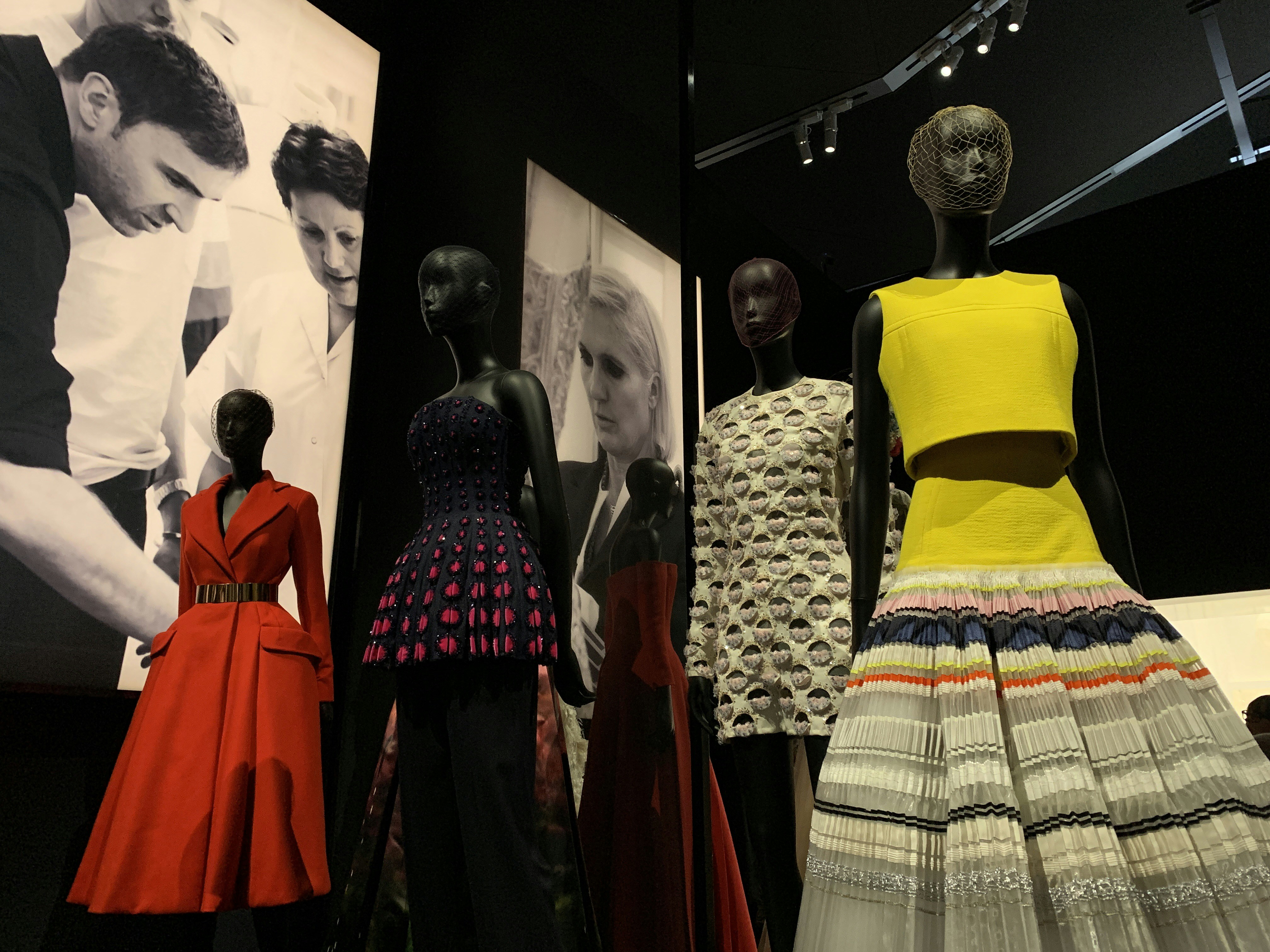Unpacking the Global Obsession with a Luxury Icon
Introduction: The Gucci Effect
Ever seen someone flaunt a Gucci bag and felt instantly drawn to it? You’re not alone. There’s something about that interlocking double-G logo, the sleek design, and the high price tag that screams luxury. But why is Gucci so popular in the first place?
From celebrities to fashion lovers, Gucci has captured the attention of millions. It’s more than just a brand—it’s a cultural phenomenon. Whether you’re curious about investing in a piece or just fascinated by how Gucci became a household name, this article will break it all down in a simple, engaging way.
🧵 A Brief Look into Gucci’s History
Gucci was born in Florence, Italy, in 1921 by a man named Guccio Gucci. He started by selling high-quality leather luggage to Italy’s wealthy upper class. Over time, the brand grew into something much bigger—a symbol of elegance and Italian craftsmanship.
Anecdote: In the 1950s, Gucci became known for its bamboo-handled bags. Why bamboo? Due to shortages after World War II! Necessity turned into a trend—proof that creativity can spark popularity.
🔗 Internal Link Suggestion:
Explore how luxury fashion trends evolve
🌟 1. Celebrity Endorsements Make Gucci Irresistible
Gucci’s popularity skyrocketed when celebrities began wearing it on red carpets, music videos, and even casually on the streets.
Harry Styles, a global fashion icon, is practically the face of modern Gucci.
Beyoncé, Rihanna, and Kylie Jenner have all worn Gucci proudly.
The brand became cool because the cool people were wearing it.
Anecdote: Harry Styles once wore a custom Gucci dress on the cover of Vogue. This bold fashion moment broke barriers and sparked headlines worldwide.
🔗 External Link Suggestion:
Gucci x Harry Styles collaboration on Vogue
🧠 2. Smart Marketing: Gucci Knows Its Audience
One of the biggest reasons why Gucci is so popular is that it markets itself brilliantly.
Their ad campaigns are edgy, bold, and unforgettable.
They use social media to connect with younger audiences on Instagram, TikTok, and Twitter.
They collaborate with artists, designers, and influencers.
Gucci isn’t afraid to break the mold. That’s why you’ll often see quirky, eccentric, and vibrant designs in their campaigns—because they know people are tired of the “same old.”
🔄 3. Reinventing Itself: Staying Fresh Every Season
Fashion trends change fast. But Gucci changes faster.
Under creative directors like Tom Ford and Alessandro Michele, Gucci evolved dramatically.
Michele added a vintage flair, gender-fluid designs, and bold prints, attracting Gen Z and millennials.
Anecdote: Alessandro Michele turned heads with his 2018 Fall collection featuring models carrying replicas of their own heads. Strange? Yes. Memorable? Absolutely.
👗 4. Signature Products Everyone Recognizes
Some products have become legendary. These include:
Gucci Marmont Bags
Ace Sneakers
Gucci Belts with the famous GG buckle
Dionysus bags
These aren’t just fashion items—they’re status symbols.
And yes, spotting that Gucci belt in a TikTok video or on a celeb’s Instagram adds a little envy to your scroll time.
💰 5. The Power of Perception: Luxury = Quality
Let’s face it: when something is expensive, we naturally assume it’s better. Gucci uses this to its advantage.
Premium materials like Italian leather, velvet, and rare exotic skins.
Handcrafted details and top-tier manufacturing.
Strict quality control.
Yes, you’re paying a high price, but you’re also buying heritage, status, and exclusivity.
📈 6. Social Media Hype and the Fear of Missing Out (FOMO)
Gucci thrives on hype. Limited releases and exclusive drops create a sense of urgency. When everyone’s posting about a hot Gucci item, you feel like you need it too.
Especially in the influencer era, FOMO is real.
Step-by-Step Tip:
Want to stay ahead of Gucci drops?
- Follow Gucci on Instagram
- Sign up for their newsletter
- Join luxury fashion communities on Reddit
- Turn on post notifications
🎨 7. Gucci’s Unique Aesthetic: Vintage Meets Modern
Gucci doesn’t just copy trends—it creates them.
With its:
Vintage 70s vibe
Floral embroidery
Maximalist looks
Unexpected color combinations
…it stands out in a world full of minimalism. That’s exactly why fashion-forward individuals gravitate toward the brand.
🔗 Internal Link Suggestion:
Discover the top 10 fashion brands in 2025
🌍 8. Global Reach and Cultural Impact
Gucci is everywhere—from Milan runways to Dubai malls, and from Paris Fashion Week to streetwear in Tokyo.
The brand is smart about adapting to local cultures without losing its identity. For example:
They’ve created modest fashion lines for Middle Eastern markets.
Special Chinese New Year collections are released every year.
Collaborations with Korean pop stars expand their influence in Asia.
🔒 9. Exclusivity Drives Desire
You can’t walk into just any store and buy Gucci. The limited availability and high price tags make it feel special.
Tip: Want to buy authentic Gucci on a budget? Try sites like The RealReal or Vestiaire Collective. But always verify authenticity!
🤝 10. Emotional Connection and Brand Loyalty
Owning a Gucci item isn’t just about fashion—it’s an emotional experience.
Anecdote: A young woman saved up for six months to buy her first Gucci bag. She said, “Every time I wear it, I feel powerful. It reminds me that I can achieve anything I set my mind to.”
This emotional bond creates loyal, returning customers who swear by the brand.
🛍️ Should You Buy Gucci? A Confidence Checklist
If you’re wondering whether buying Gucci is worth it, consider this:
✅ Do you appreciate unique, bold fashion?
✅ Do you want quality that lasts for years?
✅ Do you care about brand prestige and exclusivity?
If you answered yes to any of these, Gucci is a confident purchase. It’s not just a splurge—it’s an investment in your style, confidence, and status.
🔗 Final Thoughts: Why Gucci Continues to Lead
To sum up, why is Gucci so popular?
Because it:
Has a rich legacy
Constantly reinvents itself
Knows how to market
Sets trends rather than follows them
Creates emotional value
When you buy Gucci, you’re not just buying a product—you’re buying a piece of fashion history.



